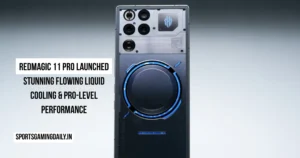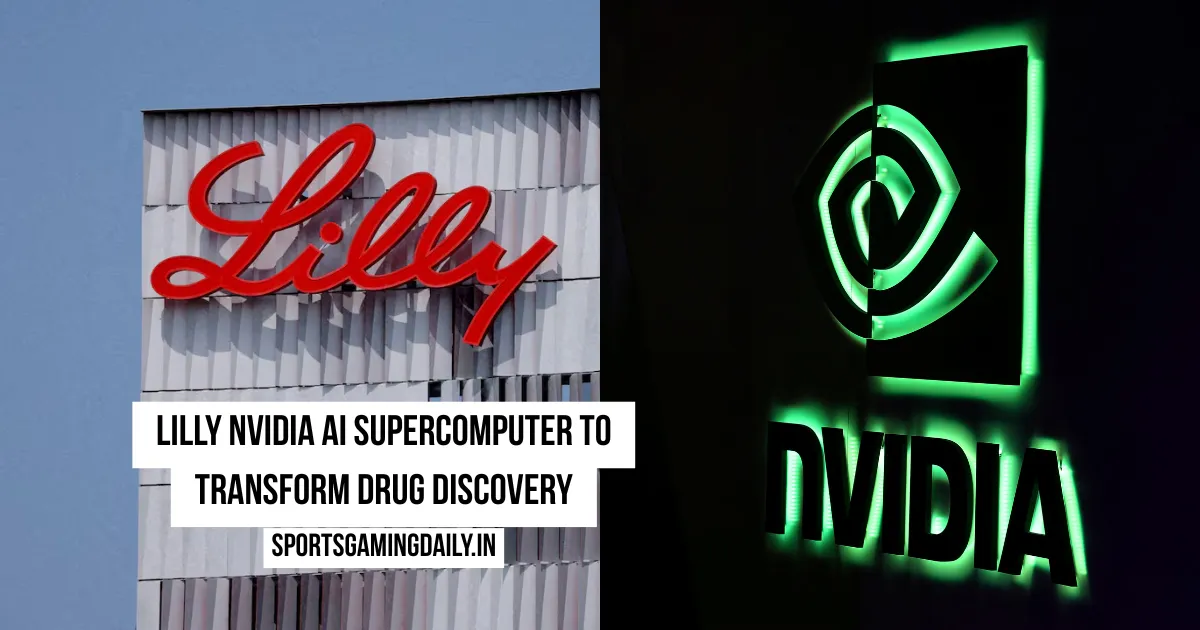The race to speed up medicine discovery is moving fast and just got a whole lot faster. A new collaboration was just announced between Eli Lilly and NVIDIA. They’re building what many are calling the most powerful computing system in healthcare research. It’s being called the Lilly NVIDIA AI supercomputer and is already getting a lot of buzz in the scientific and tech communities. This is also showing up on sportsgamingdaily where we cover industry news and future medical tech. While large scale computing in healthcare isn’t new, this is on a whole different scale.
Lilly NVIDIA AI Supercomputer: What This Partnership Means
The Lilly NVIDIA AI supercomputer was born from a simple goal. Lilly wants to reduce the time it takes to discover, test and deliver new medicines. NVIDIA brings computing power and AI model training expertise. So the Eli Lilly AI partnership is a match made in heaven – pharma knowledge + advanced tech.
Plus drug discovery is getting more complex every year. New diseases emerge. Existing conditions need better treatments. But traditional lab research is slow. NVIDIA drug discovery AI can help find patterns in big biological data sets faster than ever before.
Additionally, the partnership highlights a growing trend. Many companies in the pharma sector now understand the role of computation in research. Therefore, this collaboration is not just business news. It signals a shift toward Pharma AI innovation, where labs use machine learning to test thousands of compounds in shorter periods.
Why AI Supercomputing Matters in Drug Discovery
The Lilly NVIDIA AI supercomputer aims to handle tasks that humans and regular research computers cannot complete quickly. One major use is speeding up molecular modeling. Moreover, researchers can now test how different molecules might react with the body long before they are tested physically. Therefore, this reduces early trial failure.
Additionally, the system can help predict treatment outcomes more accurately. Many drug candidates fail because early tests cannot show how they will act in complex body systems. However, with AI-powered medicine development, models can simulate interactions that were once only possible in real clinical environments.
Furthermore, large-scale computing allows faster identification of promising drug targets. As a result, scientists save time and resources. Also, they can explore more medical questions in less time. This is why Healthcare AI transformation is viewed as essential in modern research centers.
How the Supercomputer Works
The heart of the Lilly NVIDIA AI supercomputer lies in its architecture. It combines high-capacity GPUs with advanced data processing frameworks. Additionally, it is linked with secure medical data pipelines to support research teams.
NVIDIA GPU Technology Overview
NVIDIA provides specialized hardware called GPUs, which are great at handling many calculations at once. Moreover, these GPUs are used to train AI models that analyze large datasets faster than standard processors. Because of this, they enable deep learning models that support AI for medical breakthroughs in areas like protein folding and cell behavior study.
Lilly’s AI Research and Development Teams
On the other side, Lilly runs research teams that understand real-world clinical challenges. Their work includes evaluating biological data and creating drug candidates. Therefore, when these experts use supercomputing tools, they gain new ways to find patterns and insights that were not possible before.
Around this point in the research workflow, the partnership gained attention again across sources including sportsgamingdaily, where the middle-stage progress of such biotech collaborations is often reported.
Patients and Healthcare
The Lilly NVIDIA AI supercomputer may get patients new medicines faster. It can take 10+ years to get a drug from research to market. Faster simulations and more accurate early predictions can skip several steps in that process.
Faster New Medicines
Because it can test many compounds quickly, researchers can find promising drugs earlier. And it reduces the chance of researchers spending resources on treatments that fail later. So more candidates make it to clinical trials.
Personalized Medicine
And it may support personalized medicine. It can help identify how different patient groups respond to treatments. And that’s what the world is moving towards. So treatments will be more precise and effective.
The Future of Pharma and AI Collaboration
The Lilly NVIDIA AI supercomputer partnership sets a new direction for the industry. Additionally, many other pharmaceutical companies may follow similar steps. Because complex diseases continue to rise, researchers need faster tools and more reliable predictions.
Moreover, in the next five to ten years, we may see more labs operating like data centers. AI may play a major role in every stage of drug development. Also, Biotech supercomputing may become common in research. As healthcare challenges evolve, digital research methods will likely become standard practice.
Conclusion
The Lilly NVIDIA AI supercomputer marks a strong moment in the history of medical research. It connects pharmaceutical knowledge with advanced computing ability. Moreover, it supports faster experiments, sharper predictions, and possibly more effective medicines. The collaboration shows how Pharma AI innovation continues to reshape the way treatment discovery happens. Additionally, platforms like sportsgamingdaily help audiences follow these developments in easy and relatable ways. As research progresses, patients may eventually see a world where new medicines arrive quicker and with greater success rates.










